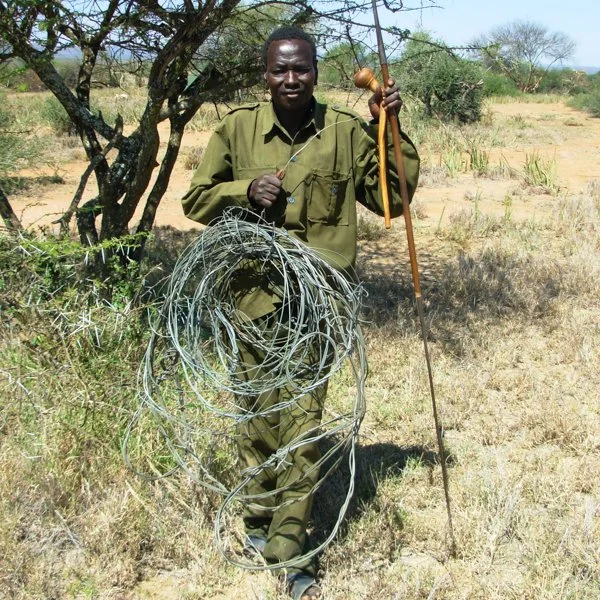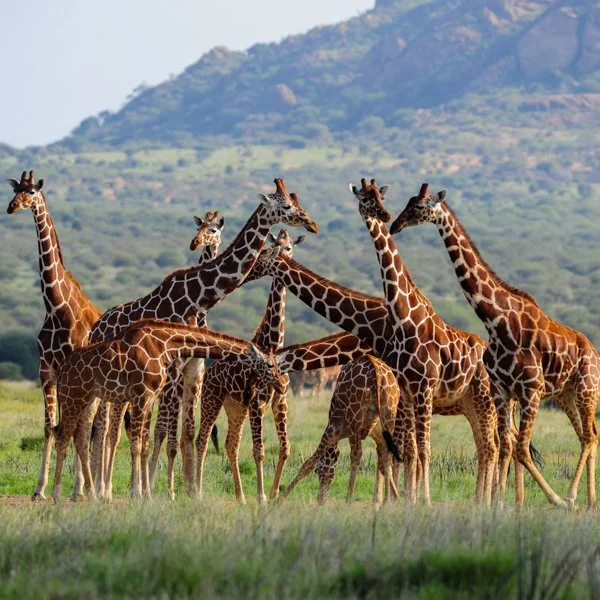Our passion for walking safaris and adventure is intricately tied to our commitment to conservation and supporting local communities. We believe that sustainable tourism is a powerful tool for preserving both nature and culture. To this end, we hire locally, pay conservation fees that directly benefit the communities, provide dry season grazing, and have established a meal program to help local school children receive extra nutrition to support their studies.
Tumaren, our private conservation area in Laikipia, Kenya, is a testament to our dedication to wildlife preservation. Since implementing protective measures, Tumaren has seen a remarkable resurgence in wildlife populations. We take immense pride in the role our safaris play in conserving the local ecosystem.
Below are some of the specific ways we safeguard wildlife and biodiversity, and a link to how our guests can contribute to these efforts if they wish.
Tumaren Wildlife Rangers
The 12 rangers are a crucial part of the team at Tumaren, patrolling over 10,500 acres amongst increasing numbers of wildlife. They work to prevent poaching and engage local communities in conservation and monitoring wildlife. We suggest the idea of contributing to training of the team or donating kit and binoculars.
Wildlife Surveys
Wildlife Surveys: Wildlife managers responsible for decision making on the wildlife ecosystem considering biodiversity and endangered species are hugely signifiant within the conservation framework. Data drawn from surveys are crucial for these managers but also promote hard facts, a notable tool in promoting community conservation.
Conservation Leases
At Tumaren we are consistently looking to expand our conservation footprint and through managing our neighbouring land the number of wildlife and employment has considerably increased.
Invasive Species Control and Soil Improvement
While there are few invasive species in Laikipia, a significant issue is an invasive cactus. A team of payed community members physically dig them up and dispose of them to prevent their spread which would threaten indigenous flora and fauna as well as livestock. We also create swales like above to catch water and improve soils.




